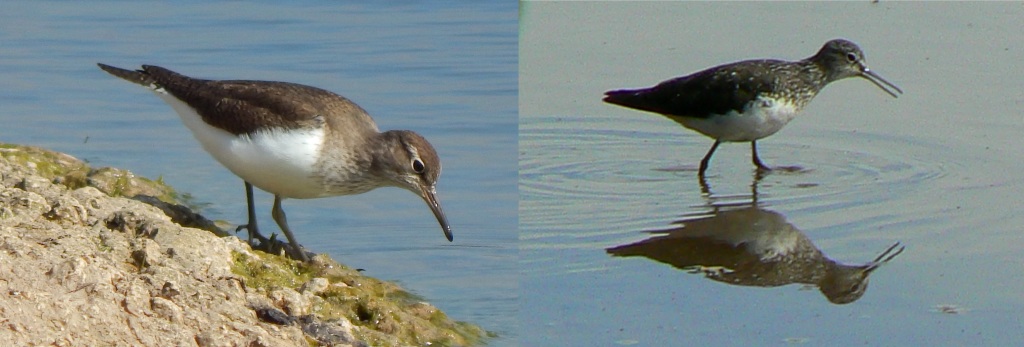
[006] Actitis hypoleucos, Common Sandpiper
Tringa ochropus, Green Sandpiper
Introduction
I am looking at two species from separate genera, because they are superficially more similar than other closer relatives. Common names can be very confusing.
Actitis hypoleuca, the Common Sandpiper and Tringa ochropus, the Green Sandpiper are two very similar small wading birds, normally distinguished by a difference in shape of a tonal border in their plumage. I have many birdwatchers as friends and have never heard of anyone seeing anything that could be called green on either bird.
Taxonomy
Kingdom – Animals
Phylum – Chordates
Class – Birds
Order – Charadriformes
Family – Scolopacidae
Genus – Actitis, Tringa
Scientific Names – Actitis hypoleucos, Tringa ochropus
Not surprisingly the Common Sandpiper has the synonym Tringa hypoleucos. I cannot find when the species was move out of Tringa, but switching genus is a very common phenomenon in Taxonomy.
Names
The name Tringa was given to the Green Sandpiper in 1599 based on a reference in ancient Greek from Aristotle to a thrush-sized, white-rumped, tail-bobbing wading bird ‘trungas.’ The Greek language also defines ochropus as ochre (coloured) feet.
The Common Sandpiper, originally Tringa hypoleucos, takes its name from Greek hypo-leucos meaning beneath-white (although the Common Sandpiper is not the only one with white underparts.) Its new name Actitis means coast-dweller.
The Green Sandpiper supposedly has a greenish brown back but, like the Common Sandpiper, you are unlikely to get close enough to see anything other than dark (brownish) grey. Many birds have a colour in their name that no one ever sees since they were named
They are ‘sand-pipers’ presumably because they are seen on sandy shores and they make a piping noise in flight. Many other birds are called sandpipers.
Description
Both Actitis hypoleucos, the Common Sandpiper and Tringa ochropus, the Green Sandpiper have dark grey-brown, closely mottled upper parts and almost white underparts. The Common Sandpiper has a white extension to the area underneath extending to the ‘shoulder’ area, which the Green Sandpiper does not have.
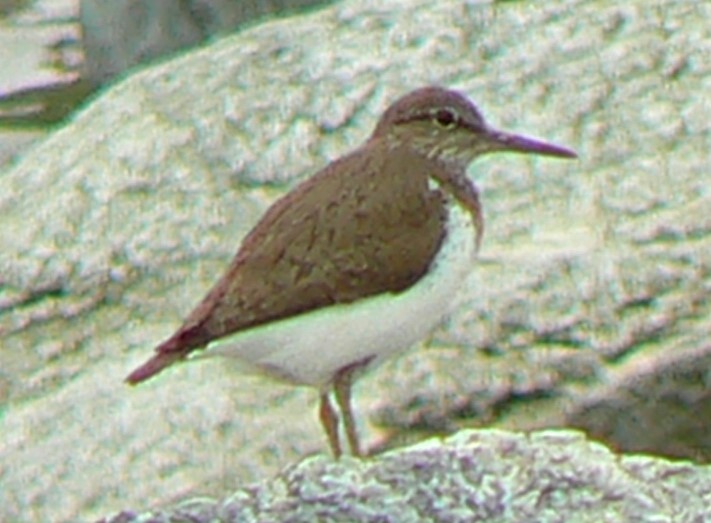
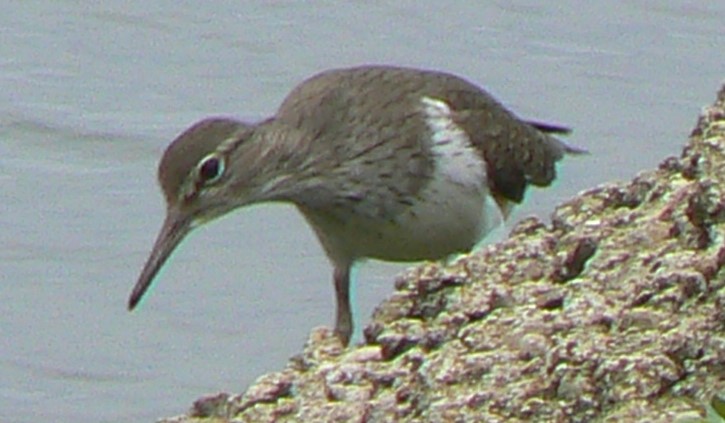
You can see the distinguishing white mark on the Common Sandpipers above but not on the Green Sandpipers below.
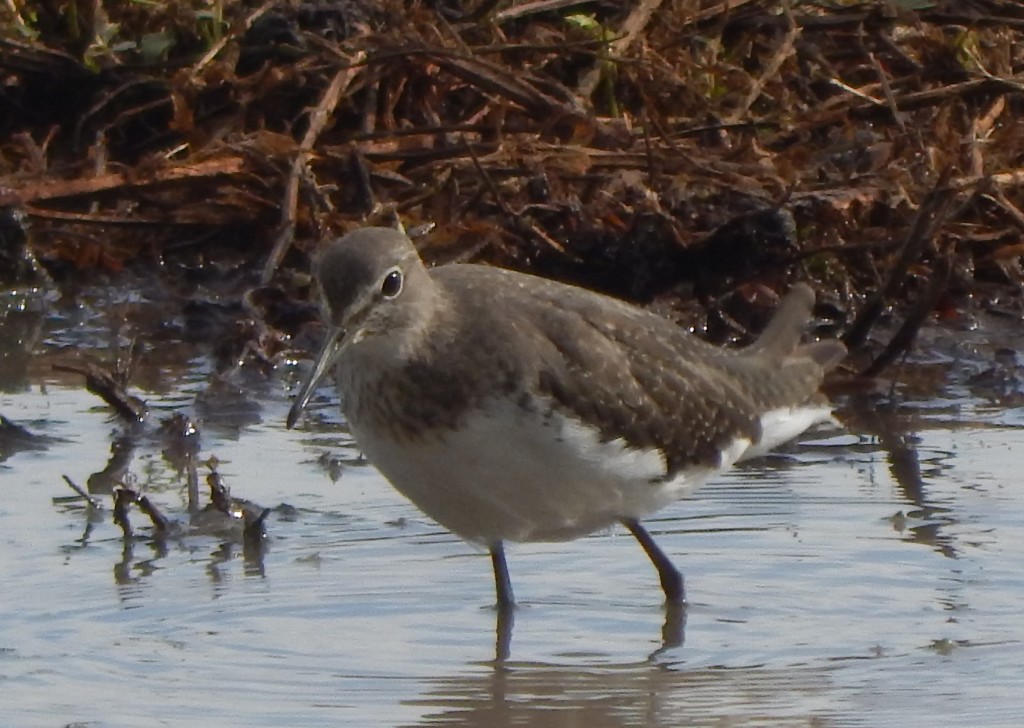
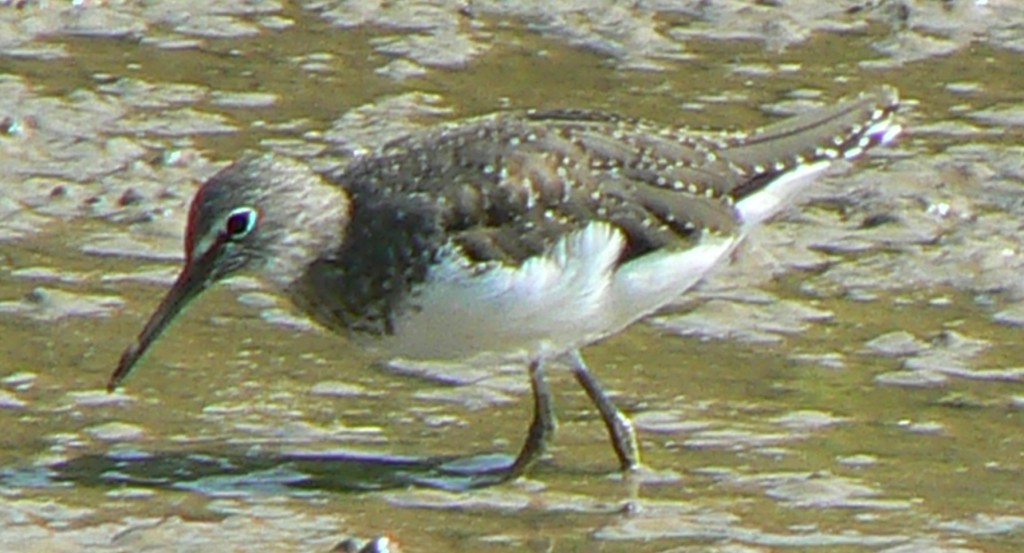
Both are fairly obviously waders with relatively long bills and legs. Both are small but can sometimes approach quite closely if you are concealed in a hide. They feed on insects, crustaceans and other small invertebrates, generally by systematically walking round lakes and ponds at the edge.
Other Notes
You will see generally single birds at wetland sites such as Slimbridge WWT and nature reserves
See also
There are several other birds in the Tringa genus commonly seen in Britain. These include [344] the Redshank, Spotted Redshank, Greenshank and (rarely) the Wood Sandpiper. These are all clearly different in appearance to either of the Sandpipers shown here.
Some other closely related genera within the family Scolopacidae contain a mixture of several other species also called Sandpipers and several species not called Sandpipers.

Pingback: [344] Tringa totanus, Redshank | The Species of Britain